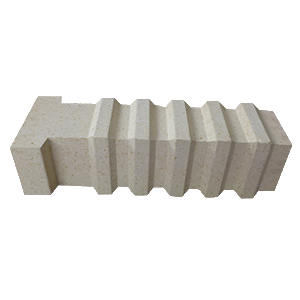
- Home
- Special Shaped Fire Brick
- Refractory Anchor
Refractory Anchor
The refractory anchor is mainly used to fix the refractory lining, which plays the role of anchoring and connection, and can improve the service life of the refractory castable as the lining.

 The types of refractory anchors are divided into metal and non-metal: metal anchors include anchoring supports, thrust pieces, and anchoring nails; non-metallic anchors include anchoring bricks with holes, hanging bricks, and refractory fiber lining anchoring nails.
The types of refractory anchors are divided into metal and non-metal: metal anchors include anchoring supports, thrust pieces, and anchoring nails; non-metallic anchors include anchoring bricks with holes, hanging bricks, and refractory fiber lining anchoring nails.
There are many shapes of refractory anchors, including V-shaped, U-shaped, Y-shaped, mesh-shaped, π-shaped, etc. The most commonly used shapes are V-shaped and shaped. It does not exceed 50mm, and there are more meshes with mesh-shaped tortoises. Some special parts of the π type are not used a lot.
The shapes and connection methods of anchoring bricks are also various, and the sizes are also different. The most commonly used anchoring bricks have heights of 330mm, 380mm, 440mm and 500mm, but the anchoring bricks have holes and no holes. , The ones with holes are generally used on the furnace wall, and the ones without holes are used on the top of the furnace, which is the so-called hanging method, so it can also be called hanging bricks.
The refractory material of anchoring bricks generally uses more grade 3 high alumina bricks, because the grade 3 high alumina bricks have good flexibility. There are also second-level high-alumina bricks and first-level high-alumina bricks, but this is determined according to the service temperature of the furnace lining and the quality of the refractory castables.
The refractory materials used for metal anchors include ordinary steel and 1Cr18Ni9 steel. Some high temperature and key parts use 2520 heat-resistant steel to make metal anchors of different shapes. Metal supports and thrusts are preferably made of heat-resistant steel. General steel is easy to rust, and metal anchors are easy to oxidize at high temperatures. They are buried in the castable lining during construction, and the distance between the hot end and the working surface of the lining castable is 20-40mm, that is, Must be below the surface of the refractory castable.
Metal anchors need to be welded. Welding is to be fully welded, and there must be no false welding or missing welding; while the anchor brick is mainly free of cracks, and the size must be accurate.
The optimization of anchors and anchor bricks is different in shape, which is more conducive to the service life of the furnace lining



